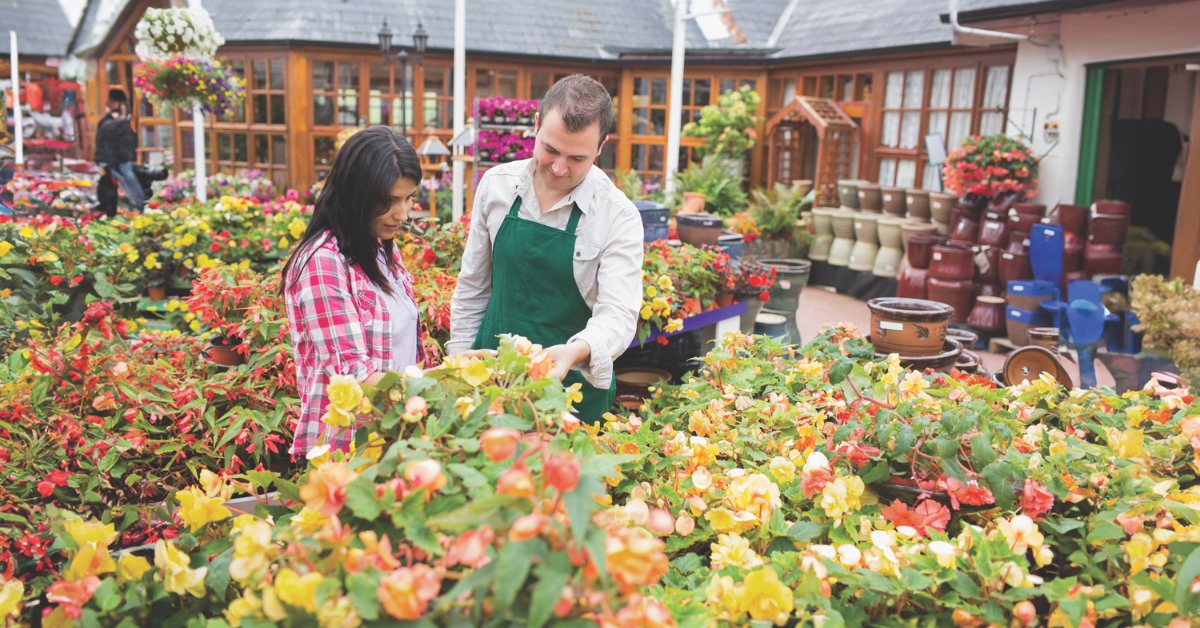May 10, 2024

Influencing invasives
BY ART VANDEN ENDENThe horticultural industry has long prided itself as being a ‘green’ industry. We can use the word ‘green’ to describe much of what we do. We provide plants and related products to home gardeners, grow plants, design, install and maintain landscapes, as well as promote green living in our communities. Those of us who are growers or work in the nursery sector can potentially have an even more active role: influencing what to grow and what to sell to our customers. This is particularly important when considering the issue of invasive species.
Many sectors of the green industry are impacted by the trade of invasive plants. There is a huge range of opinions within our industry on the impact or seriousness of invasive plants, but I personally see them as a threat to our ecosystems. The knowledge we have now changes what we believed were good choices made in the past.
In the garden centre sector, we have specialty retailers and growers that exclusively provide native plants, and we have contractors and retailers that do not sell or carry known invasive plants. We also have retailers, contractors, growers and designers who do not see the topic of invasive plants as an issue — and even see the push to eliminate invasives as a threat to their livelihood.
This makes a lot of sense. After all, the horticultural industry, like most industries, is driven by supply and demand. In our business, demand generally comes first, followed by supply.
Demand is driven by a multitude of factors — what people find beautiful, what grew in their gardens as children, gardening influencers and even gardens they see in their travels (after a trip to P.E.I., I became obsessed with trying to grow Lupines in my garden despite their not being particularly suitable for my southern Ontario location). But something none of these sources can claim with the same authority as those of us in the trades and working with customers is a deep understanding of plants and their role in the specific landscapes we have a hand in creating.
Whether you believe invasives to be a threat or not, we are in a position to influence customers — and by extension affect supply and demand. Demand can be strongly influenced by the suggestions of garden retailers and wholesalers. There are also many leading landscape architects and designers who promote and suggest plants and products for clients, as well as contractors and garden influencers in print, on-air and online.
Let’s take a wholesale growing nursery as an example of how we can influence demand. If this nursery receives several requests from customers for a specific plant, they will likely consider adding that plant to their product line up. If consumers stop buying specific plants, they are motivated to cease production or purchasing. It’s important to note, however, that change doesn’t happen overnight. For nurseries, the supply chain can vary in length from a few months for annuals, some perennials and small plants, to up to 10 years or more for larger trees and specimen plants.
Recently, I moderated a panel discussion on the impact of invasive plants on our industry at Landscape Ontario’s Plant Symposium in Ottawa. We had excellent panelists from four different sectors, representing retailers, growers, contractors and landscape architects/designers. Within this group we had varying opinions on the seriousness of the topic. The one point the entire group agreed upon was the need for more education on invasive plants and species.
My personal takeaway from the discussion was to ask myself who needs to be educated — our customers or ourselves? We are entrepreneurs, we run businesses, we have significant investments in inventory, equipment, staff and business brands. I do not believe we are going to be legislated by the government to ban known invasive plants. This action has been taken in several U.S. states, but does not seem to be on the radar with any levels of our government.
The good news is, we have excellent leaders and experts to guide and educate us, whether that be provincial invasive plant organizations, Master Gardeners or other garden influencers who can and actively try to improve plant selections in our gardens. Workshops, seminars and garden walks can help identify problems, as well as solutions.
There are already many good resources being produced, like the ‘The Grow Me Instead’ program in Ontario. This information is made available to help consumers make better choices on the plants and garden practices they choose. I believe using and constantly improving these tools is required as we learn more about the impact of our current practices and the challenges that nature faces from human activities. It is important that we as an industry continue to educate ourselves, adjust our practices and be advocates for new technologies and best practices.
We are currently in a market where there still is enough demand for some invasive plants that suppliers feel compelled to produce them. My hope is that through improved education of industry members, we will be able to help dry up demand to ensure that known or suspected invasive plants stop entering the environment.

Art Vanden Enden loved every minute of his 44- year garden centre career with Weall and Cullen and Sheridan Nurseries. In retirement, Art enjoys giving back to the profession with Landscape Ontario’s Garden Centre Sector Group, and sharing his experience with Landscape Trades readers.